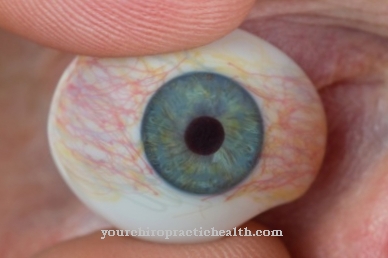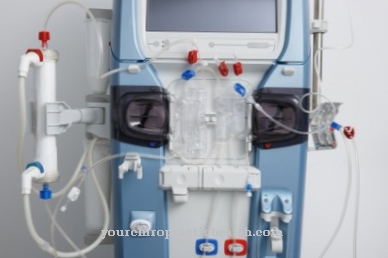Under one bifocals means special multifocal glasses. It is suitable for people who have two ametropia.
What are bifocal glasses?

With the help of bifocal glasses, two different ametropia can be corrected at the same time. The Latin term 'bifocal' means 'two' ('bi') and 'focal point' ('focal'). A bifocal lens achieves two different optical effects and can be used for different distances.
In most cases, myopia and age-related farsightedness are corrected with bifocal glasses. Both ametropia have different causes. If there is nearsightedness, clear vision is restricted in the distance, which is why long-distance glasses are required. If, on the other hand, presbyopia is present, the objects that are close in front of the eye can no longer be seen clearly.
Reading glasses are used to correct this problem.
Bifocal glasses were invented by Benjamin Franklin (1706-1790) as early as 1770. Franklin suffered from having to swap his distance glasses for reading glasses over and over again. Finally, he came up with the idea of adding a corresponding visual effect to each side of the glasses. This lens was called Franklinglas.
Nowadays, bifocal glasses are made with two different types of glass. A piece of glass (which has a higher refractive index) is melted into the carrier glass, which is kept at far strength. This creates a smooth surface on which the transition between the near part and the far part cannot be felt.
Shapes, types & types
The bifocal glasses are multifocal glasses. In these, different prescription corrections are combined within a single lens. So you have more than one focus. This is why they are also called multifocal glasses.
The trifocal glasses represent a variant of the bifocal glasses. They are also used to correct two ametropia. Just like the bifocals, the main lens act as distance glasses to correct myopia. There is also a set of glasses that act like reading glasses and correct presbyopia. The trifocal glasses also have a zone for medium visual distances.
Nowadays, however, bifocal glasses and trifocal glasses tend to be outdated. Instead, more modern varifocals are used. With these glasses, the transition between the different angles of refraction is smooth or flowing. The equipment of varifocal glasses consists of three zones. The upper area is used to recognize objects from a distance and the lower zone to correct near vision. The sliding middle section is in between and is considered optimal for a specific intermediate distance. However, varifocal glasses are less suitable for use in front of a computer monitor.
Structure & functionality
Bifocal glasses are made up of two glasses that have different refractive powers. Inside the main lens that is used to correct myopia is a smaller lens. This is specially made for optimal near vision. Both lens glasses have a different curvature. Their refractive power is also different. This creates a dividing line between the lenses that can be clearly seen. It is considered a feature of bifocal glasses. However, many people rate this edge as annoying.
Either glass or plastic is used for the material of bifocal glasses. The manufacturer cuts an opening into bifocal glasses made of glass. The reading glasses are then melted into this opening. In the case of bifocal glasses made of plastic, the glasses are made in one piece.
The production of the reading part of bifocal glasses is carried out in different widths. The usual dimensions are 25, 28 and 40 millimeters. The wider the measure, the more expensive the glasses are. Any frame can be used as a frame for bifocal glasses.
With the help of bifocal glasses the annoying exchange between distance glasses and reading glasses can be avoided, as they correct not only nearsightedness but also farsightedness. However, the wearer of the special glasses often has to get used to the fact that only part of the lens is used for a sharp image. When looking down, objects in the distance on the ground can sometimes only be seen blurred.
You can find your medication here
➔ Medicines for visual disturbances and eye complaintsMedical & health benefits
Bifocal glasses are useful for people who suffer from both nearsightedness and age-related farsightedness and therefore need two different glasses. Both ametropia can be corrected with bifocal glasses. Switching between two glasses is then no longer necessary.
The bifocal glasses are also used therapeutically to treat a hypo-accommodative convergence excess. The same applies to other strabismus diseases that are accommodative and in which there is an extensive convergent near angle.
In some cases, however, bifocal glasses can also cause problems. The human eye is strained by switching between distance vision and near vision, which is usually not tiring. However, especially in the acclimatization phase, distortions and dizziness often occur. Since the wearer of bifocal glasses strains and concentrates excessively while seeing, tears and headaches are not uncommon. For this reason, after purchasing bifocal glasses, it is recommended that you take it easy and wear the glasses on a weekend or take a day off in between.
In order for the bifocal glasses to develop their positive effects, the wearer's eyesight must be determined precisely in advance. In addition, the lenses must be accurately centered.

.jpg)























.jpg)


